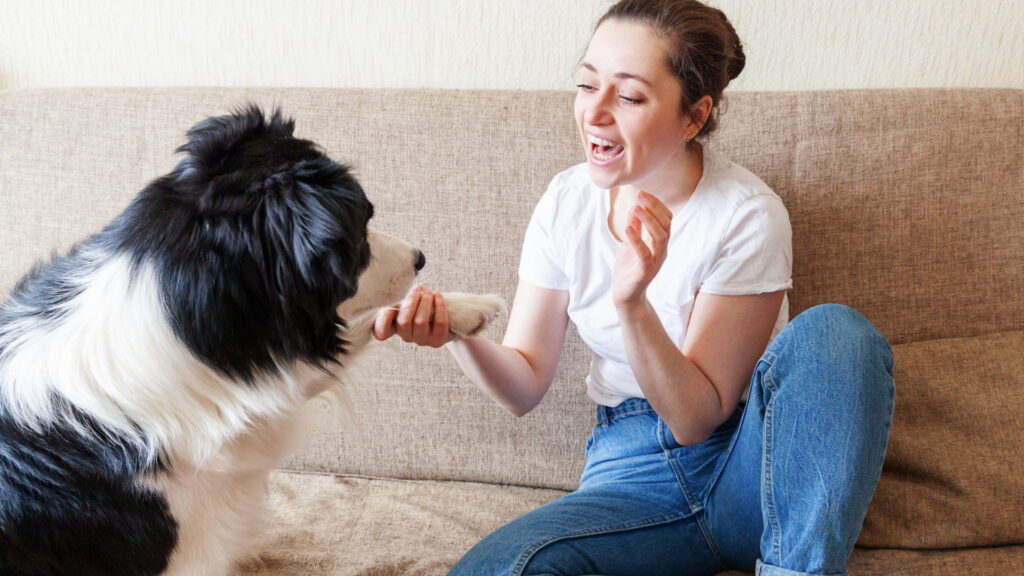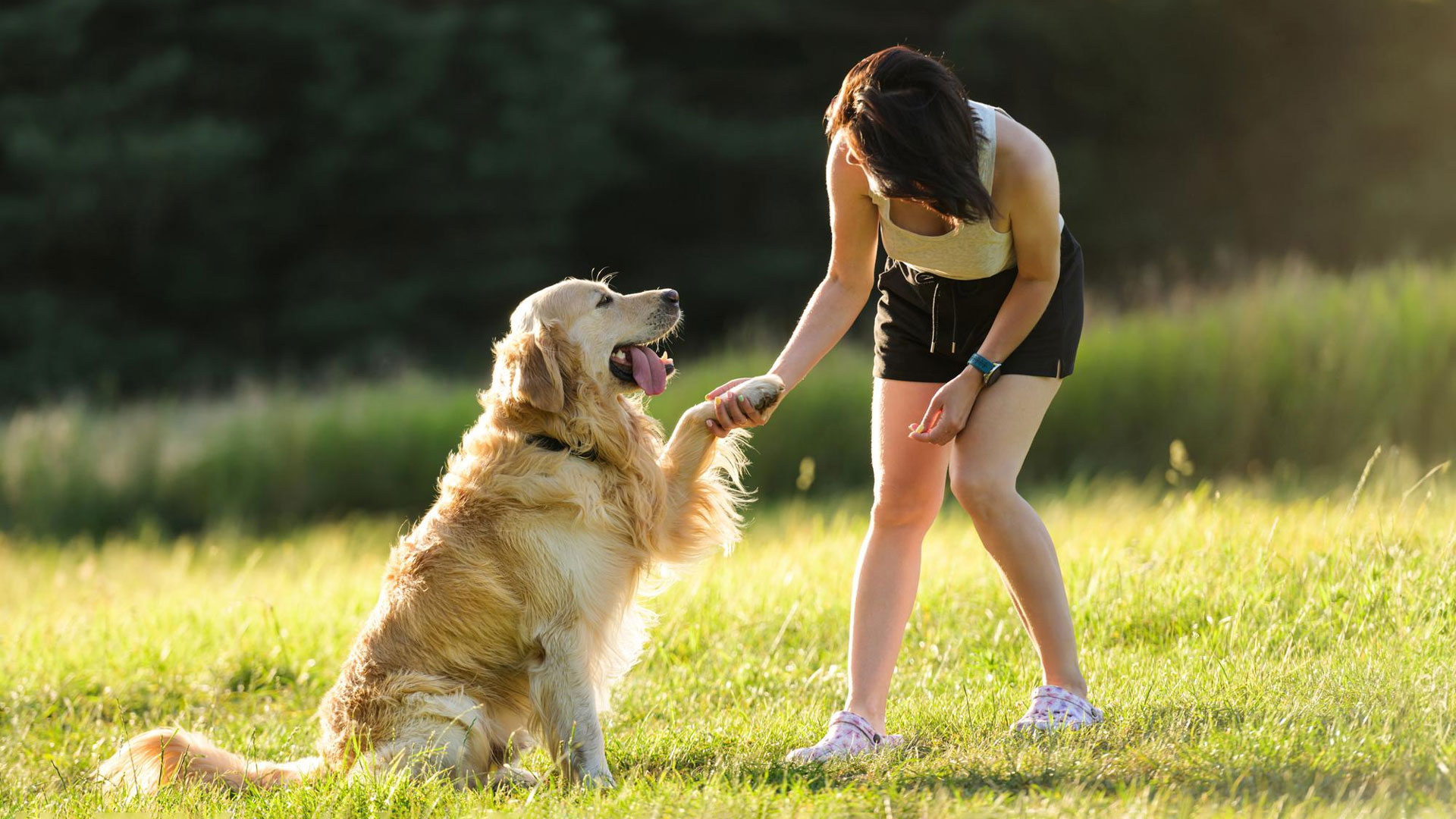Have you ever seen a dog do a cool trick and wished your pet could do that too? Well, guess what? With a little bit of patience and the right techniques, you can teach your furry friend some awesome commands and tricks! Training your pet: effective methods for teaching basic commands and tricks involve more than just repeating words. You’ll want to start with simple commands like ‘sit’ or ‘stay’. Make sure to have some treats in your pocket. Pets love getting a tasty snack as a reward for doing something right. Remember to use a happy voice when they do what you ask – this makes them feel good and they’ll want to do it again. It’s important to keep training sessions short, so your pet doesn’t get bored or tired. Just 5 to 10 minutes a day can work wonders over time. And don’t forget to be patient. If your pet doesn’t get it right away, that’s okay! They’re not going to learn everything in one day. With your consistent effort and positive attitude, your pet will be on their way to learning new tricks and following commands before you know it. So grab those treats, get down to their level, and let the fun begin!
Understanding Your Pet’s Learning Style
Just like people, animals have their own unique ways of learning. It’s fascinating to see how some pets can grasp new tricks almost instantly, while others may require a bit more patience and practice. And that’s perfectly normal! The trick is to discover the special thing that motivates your furry friend. Is it a delicious snack? Maybe they can’t resist a tasty treat when they’ve done something well. Or perhaps they’re more into physical affection and would do anything for a loving belly rub.
Observing your pet’s reactions can give you clues about their preferred learning style. For instance, if your dog’s tail wags excitedly when you reach for the treat jar, it’s a good sign they’re motivated by food. On the other hand, if your cat purrs and leans into your touch after performing a trick, physical affection might be their reward of choice. By using what they adore as a form of encouragement, you can make their learning process both fun and rewarding.
Remember, the goal is to create a positive learning environment. When your pet associates good behavior with their favorite things, they’re more likely to repeat that behavior. It’s important to be consistent and patient. If they don’t get it right away, don’t give up. Keep practicing with them, and always end on a high note to keep their spirits up. With time and understanding, you’ll find the best way to communicate and bond with your pet through their own unique learning style.
Mastering the Basics
Before you dive into teaching your furry friend fancy tricks like backflips, it’s essential to start with the simple stuff. Think of it as teaching a toddler to walk before they can run. Basic commands such as ‘sit’, ‘stay’, ‘come’, and ‘down’ are the building blocks for a well-behaved pet. These commands not only help in day-to-day life but also keep your pet safe in potentially dangerous situations.
Pick one command to begin with, and use a specific word or phrase consistently. For instance, if you choose ‘sit’, always use ‘sit’ and not ‘sit down’ or ‘take a seat’ to avoid confusion. Pets respond to consistency, so using the same word each time helps them understand what you want. It’s a bit like having a secret code between you two!
Now, let’s talk about practice. Just like you wouldn’t spend hours on a single homework assignment, your pet needs short but effective practice sessions. Aim for training sessions that last about 5 to 10 minutes. This keeps things fun and prevents your four-legged pupil from losing interest. Imagine trying to learn math for hours on end – you’d get bored, right? It’s the same with pets!
During these mini training adventures, keep things upbeat and positive. When your pet does something right, reward them with a treat, a pet, or a cheerful “Good job!” This encouragement is like getting a gold star in school; it makes you want to do it again. And just like that, with patience and practice, you’ll have a pet who’s not only a joy to be around but also one who can impress your friends with their good manners.
Positive Reinforcement: The Key to Success
Understanding Positive Reinforcement
Imagine you’re a kid who just cleaned your room without being asked. Your parents are so happy they let you have extra screen time. That’s positive reinforcement. It’s a simple way to encourage good behavior by offering a reward. Now, let’s think about your furry friend. When you’re teaching your pet, using positive reinforcement means rewarding them for their good actions. It’s a thumbs-up for their efforts!
What Counts as a Reward?
So, what can you use as a reward? It’s not just about tasty treats, though those work great. You can also give your pet a belly rub, a favorite toy, or extra playtime. The key is to find out what makes your pet’s tail wag with joy. Every pet is different, so while one might love a piece of chicken, another might prefer a quick game of fetch.
Timing is Everything
For positive reinforcement to really work, timing is crucial. You need to give the reward right after your pet does something good, almost like hitting the buzzer on a game show. This helps your pet understand exactly what they did to earn the reward. If you wait too long, they might get confused about what they’re being praised for.
Consistency Leads to Success
Consistency is your best friend when it comes to positive reinforcement. Always reward the same good behavior in the same way. This way, your pet knows what to expect and what’s expected of them. It’s like learning to hit the bullseye in archery; the more you practice the right way, the better you get.
Keep It Fun and Positive
Remember, the goal is to make learning a blast for both you and your pet. Keep sessions short, sweet, and full of smiles. When your pet looks forward to training, they’ll pick up new skills like a pro. It’s all about creating a happy and positive learning environment.
By embracing positive reinforcement, you’re not just teaching your pet new tricks; you’re also building a bond of trust and friendship. It’s a win-win situation where your pet gets goodies and love, and you get the joy of seeing them succeed.
Steering Clear of the No-Nos
When you’re helping your furry friend learn new things, it’s almost like being a teacher in a fun and fluffy classroom. Slip-ups are part of the learning process, and they happen to every pet. Maybe your dog didn’t sit when you asked, or your cat leaped onto the counter again. It’s important to keep your cool. Pets can sense when we’re upset, and scolding them can make them nervous or scared, which isn’t helpful for learning.
Instead of getting upset, take a breath and let the mistake slide by without a fuss. This way, your pet won’t feel stressed and will be more likely to try again. Watch and wait calmly for your pet to give it another go. If you notice they’re repeating the same error, it’s a hint that they might not be ready to move forward. This is completely okay!
Going back to the basics can be a big help. Spend some extra time on the earlier steps, making sure your pet feels confident and understands what you’re asking. Consistent practice in a happy, stress-free environment is the secret sauce to success. Plus, always remember that encouragement and positivity are your best tools in guiding your pet. Celebrate the small victories with treats or cuddles, and you’ll both enjoy the learning journey.
By sticking to these friendly techniques, you’re not just teaching your pet commands and tricks; you’re also building a bond of trust and understanding. And that’s the most rewarding part of the adventure you’re both on!
Teaching Tricks and Advanced Commands

Once your furry friend has a good grasp on simple instructions like ‘sit’ and ‘stay’, you’re ready to dive into the exciting world of tricks and complex commands. Teaching your pet these new skills is not just fun but also stimulates their mind and strengthens your bond. Let’s start with something enjoyable like ‘shake paw’ or the adorable ‘roll over’. Here’s how to make the learning process enjoyable for both of you.
Firstly, pick the trick you want to teach and think of it as a sequence of easy steps. For example, to teach ‘shake paw’, you might begin by touching your pet’s paw and then giving them a treat when they lift it. It’s similar to how you learn a dance by practicing one move at a time. Always use a happy voice and body language to show your pet this is a fun game.
Next, patiently guide your pet through each part of the trick. If you’re teaching ‘roll over’, gently help them lie down and then roll to one side while saying the command. Treats and praises are your best friends here—they act like gold stars on a homework assignment, showing your pet they’re on the right track.
Remember to celebrate every tiny success. If your dog wiggles a bit when you say ‘roll over’, that’s progress! Throw a mini-party with extra pats or a small treat. This encouragement is like clapping for a child who has just recited their ABCs—it builds confidence and eagerness to try again.
Consistency is key. Practice the new trick for a few minutes each day, and keep the sessions short and sweet. You wouldn’t want to spend hours on math homework, and your pet feels the same about training. Keep it light and enjoyable, and before you realize it, your pet will be performing the full trick with enthusiasm.
Finally, be patient. Some pets might pick up tricks as quickly as a student learns a new song, while others might take a bit longer, like learning a new language. Every pet is unique, so work at a pace that’s comfortable for both of you. With time and practice, you’ll be amazed at what you both can achieve together.
By breaking down tricks into simple steps and celebrating every little victory, you turn learning into a fun and rewarding experience. Keep up the great work, and soon your pet’s talent show will be the talk of the neighborhood!
Consistency is Key
Imagine you’re trying to learn a new song on the piano. You wouldn’t expect to play it perfectly after just one try, right? The same goes for educating your furry friend. Regular practice is a must. You’ll want to set aside some time each day for training sessions. This helps create a habit for both you and your pet. Consistency is what makes the magic happen!
Now, think about the time of day that works best for you. Maybe it’s in the morning before breakfast, or perhaps in the evening before dinner. Whatever you choose, stick to it. Your pet thrives on routine, and by training at the same time every day, you’re setting them up for success. This regularity tells your pet, “It’s time to focus and learn.”
But it’s not just about timing. Consistency in commands is also crucial. If you say “Come here” and someone else in the house says “Over here,” it can mix up your pet. Make sure everyone who interacts with your pet knows the exact phrases to use. This way, your pet won’t receive mixed signals and can understand what’s expected more quickly.
By maintaining a consistent approach, you’re giving your pet a clear and steady learning path. They’ll start to recognize the patterns in their training. Before you know it, they’ll be responding to commands and mastering new tricks with ease. Remember, regular practice with clear, uniform commands is the secret to a well-trained pet.
Patience Pays Off
Imagine you’re learning a brand new skill, like riding a bike. It’s not something you’ll get the hang of overnight, right? The same goes for your furry friend when it comes to learning new things. Training takes time, and it’s all about those baby steps. Some days, you might try teaching a simple sit or stay, and it seems like your pet just isn’t getting it. That’s okay! Don’t throw in the towel.
Here’s the deal: be patient with your four-legged buddy and with yourself. You’re both on this learning journey together. Just like any good friendship, the more time you spend together, the stronger your bond grows. And guess what? That bond is the secret sauce to successful training. Every treat given, every gentle correction, and every repetition is a step closer to your goal.
So, keep at it, even on those days when it feels like you’re stuck in the mud. Celebrate the tiny victories, like the first time they come when called, or when they finally figure out that the couch isn’t a chew toy. Before you know it, you’ll have a well-mannered pet, wowing your friends and neighbors with their awesome behavior. And when that happens, you’ll look back on the training days with a smile, knowing all that patience paid off big time.
When to Seek Professional Help
It’s completely normal to encounter challenges when raising a pet. Sometimes, despite your best efforts, you might find that your furry friend isn’t responding to your attempts at guiding their behavior. This is when it’s wise to consider enlisting the help of a professional trainer.
Recognizing the Signs
Keep an eye out for signs that your training efforts aren’t going as planned. This could include continuous misbehavior, not following simple instructions, or signs of anxiety in your pet. If you notice these issues, it’s a good indicator that professional guidance could be beneficial.
Expertise Makes a Difference
Professional trainers bring a wealth of experience to the table. They’ve worked with many pets and know a variety of techniques to address different issues. Their specialized knowledge can provide you with strategies tailored to your pet’s unique needs.
Benefits of Group Classes
Many trainers offer group classes, which can be incredibly valuable for your pet. These classes not only teach obedience and manners but also provide an opportunity for your pet to interact with others. Socializing is an essential aspect of a pet’s development and can help them become more well-rounded and comfortable in various situations.
Ultimately, seeking help is a proactive step towards ensuring a happy and harmonious relationship with your pet. Remember, it’s okay to ask for assistance – it shows that you care deeply about your pet’s wellbeing and your role as a responsible pet owner.
Wrapping It Up
Training your pet can be a super fun and rewarding experience for both of you. With these effective methods, a sprinkle of patience, and a dash of consistency, you’ll be on your way to having a well-behaved pet in no time. So grab those treats, find your pet’s favorite toy, and start practicing those commands and tricks today!




